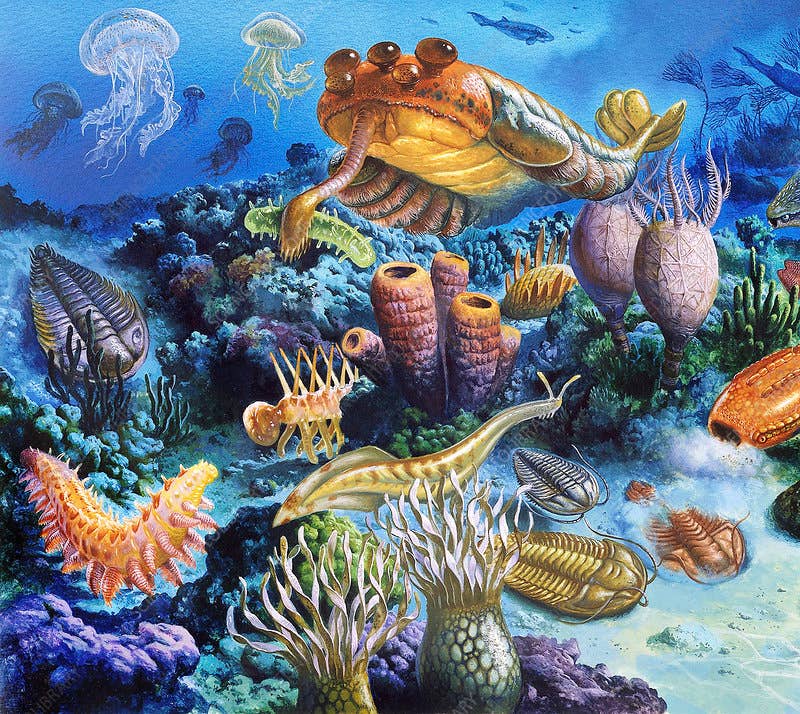New clues reveal how the universe’s giant galaxies formed
Starburst galaxies in the early universe reveal the origins of massive elliptical galaxies, solving a decades-old mystery.

Research links starburst galaxies to the formation of massive elliptical galaxies. (CREDIT: iStock Photo)
Stars are the building blocks of the universe, yet their arrangement within massive galaxies remains one of astronomy’s great enigmas. Most stars today are found in spheroids—dense, bulging regions within spiral and elliptical galaxies.
The origins of these structures have long puzzled scientists, despite theories linking their formation to distant, luminous galaxies observed in the early universe.
Recent findings are shedding light on this mystery, revealing a direct connection between intense star-forming episodes in early galaxies and the emergence of these massive spheroids. By analyzing the structure of high-redshift galaxies—those formed billions of years ago—researchers are piecing together the cosmic puzzle of galaxy evolution.
Using data from the Atacama Large Millimeter/submillimeter Array (ALMA), astronomers studied more than 100 galaxies in the distant universe. These galaxies, characterized by their extreme luminosity and rapid star formation, hold clues to spheroid creation.
The study, led by a global team of astrophysicists and published in Nature, marks a breakthrough in understanding galaxy evolution.
A Revolutionary Approach to Ancient Galaxies
Traditional methods of studying galaxies have faced obstacles. Dust obscures stellar emissions, and submillimeter wavelengths often lack the signal-to-noise ratios necessary for detailed observation. ALMA’s advanced capabilities, however, allowed researchers to overcome these limitations, providing unprecedented insights into the structure of early starburst galaxies.
Dr. Qing-Hua Tan from the Purple Mountain Observatory in China described the innovation: “This is the first real evidence that spheroids form directly through intense episodes of star formation located in the cores of distant galaxies. These galaxies form quickly—gas is sucked inward to feed black holes and triggers bursts of stars at rates ten to 100 times faster than our Milky Way.”
Related Stories
By examining the light distribution in these galaxies, the team identified patterns inconsistent with typical disk-like structures. Instead, the galaxies displayed a triaxial, or three-dimensional, shape. The shortest axis was, on average, only half the length of the longest, suggesting that these were not flat disks but dense, compact spheroids.
The formation of these spheroids is tied to dramatic events in the early universe. Dr. Annagrazia Puglisi from the University of Southampton explained, “Two disk galaxies smashing together caused gas—the fuel from which stars are formed—to sink towards their center, generating trillions of new stars.”
These collisions, occurring 8 to 12 billion years ago, marked a dynamic period in the universe’s evolution. Interactions between galaxies, combined with non-co-planar gas streams, fueled the rapid starbursts necessary for spheroid formation. The gas flow into these galactic centers also fed supermassive black holes, intensifying the star-forming process.
The study’s findings align with theoretical models, which predict that galaxy mergers and gravitational interactions are key drivers of spheroid development. Supported by simulations, the research offers a cosmologically significant pathway for understanding how galaxies grew into the massive structures observed today.
Mapping the Universe’s Evolution
To gather the data, researchers relied on archival projects such as A3COSMOS and A3GOODSS, which provide high-quality observations of distant galaxies. These projects enabled the analysis of light profiles and structural features, revealing the intense activity within early star-forming galaxies.
Future investigations will expand on these findings by integrating data from advanced telescopes. Observations from the James Webb Space Telescope (JWST), Euclid satellite, and instruments aboard the Chinese Space Station will further map the stellar components of galaxies.
Dr. Puglisi highlighted the importance of this work: “This will give us a more complete picture of early galaxy formation and deepen our understanding of how the universe has evolved since the beginning of time.”
The implications of this study extend beyond solving an intergalactic mystery. The rapid creation of spheroids challenges existing notions of galaxy evolution, suggesting a more dynamic and interconnected process.
By tracing the origins of massive elliptical galaxies to starburst-driven spheroid formation, scientists are redefining our understanding of the cosmos.
“This discovery takes us closer to solving a long-standing mystery in astronomy,” said Dr. Puglisi. “It redefines how we view the processes that shaped galaxies in the early universe.”
As researchers continue to probe the universe’s distant past, the emerging picture of galaxy formation offers profound insights into the forces that shaped the cosmos. The study stands as a testament to the power of international collaboration and cutting-edge technology in unraveling the universe’s deepest secrets.
Note: Materials provided above by The Brighter Side of News. Content may be edited for style and length.
Like these kind of feel good stories? Get The Brighter Side of News' newsletter.
Joshua Shavit
Science & Technology Writer | AI and Robotics Reporter
Joshua Shavit is a Los Angeles-based science and technology writer with a passion for exploring the breakthroughs shaping the future. As a contributor to The Brighter Side of News, he focuses on positive and transformative advancements in AI, technology, physics, engineering, robotics and space science. Joshua is currently working towards a Bachelor of Science in Business Administration at the University of California, Berkeley. He combines his academic background with a talent for storytelling, making complex scientific discoveries engaging and accessible. His work highlights the innovators behind the ideas, bringing readers closer to the people driving progress.



